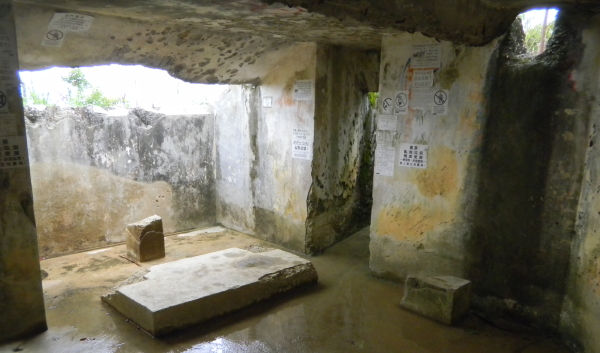As I glide across Victoria Harbor on the swift Mass Transit Railway, toward Hong Kong Island and the city’s gleaming skyline, no junks or sampans are visible. Walking the streets of the bustling Wan Chai or trendy Lan Kwei Fong neighborhoods, I see no rickshaws or women in traditional, snug-fitting cheung sarm dresses. After all, the metropolis of Hong Kong, one of the world’s most densely populated areas, bears no resemblance to the city in war photographs of a generation ago.
The Hong Kong Hotel, the Fortress Headquarters, and the North Point Power Station have nearly vanished without a trace. The city’s only easily visible wounds are shrapnel scars on the two bronze lion statues cast in 1935 that stood in front of a banking company headquarters, the HSBC Building, during the war, and continue to guard its replacement.
The Battle of Hong Kong remains one of the “lost” battles of World War II. After all, the conflict was declared lost virtually before it ever began. “There is not the slightest chance of holding Hong Kong or relieving it,” Winston Churchill said in January 1941. Churchill proved prophetic: Hong Kong’s governor, Sir Mark Young, surrendered the colony to the Japanese in a ceremony at the Peninsula Hotel on Christmas Day 1941, after just 17 days of fighting. Because of the battle’s brevity and supposed strategic insignificance, it remains largely lost to historians too.
Without any historic markers to guide me, I could not help but wonder if I, too, had embarked on a lost cause. But then I realized that while Hong Kong may be almost devoid of landmarks and museums, it is quite literally surrounded by wartime history.
On December 9, 1941, the crack Imperial Japanese 38th Division swarmed into the Shing Mun Reservoir Valley—some troops using ropes and grappling hooks on sheer cliffs—to assault the Gin Drinkers’ Line, Hong Kong’s peculiarly named line of defense that was, as the late historian Oliver Lindsay explained, “the scene of alcoholic picnics in happier days.” Also called “the Oriental Maginot Line,” the string of pillboxes, bunkers, trenches, and tunnels stretched for nearly 12 miles across hilly terrain in the New Territories on the mainland, just north of Hong Kong Island. (Hong Kong is composed of Hong Kong Island, Kowloon, the New Territories, and other smaller islands.) The 38th Division’s goal, and mine, too, was to reach the nexus of the Gin Drinkers’ Line—the Shing Mun Redoubt.
Taking the Mass Transit Railway to Tsuen Wan Station, six miles north of Kowloon, I ride the No. 82 public bus up a serpentine road through forested hills to Shing Mun Country Park. After a 20-minute hike past the reservoir’s verdigris-hued waters and families of macaque monkeys, finished off by a heart-pumping ascent of the MacLehose Trail, I arrive at the ruins of the redoubt.
The Shing Mun Redoubt straddles scenic Smugglers’ Ridge, secluded amid the ferns and Australian paperbark trees that swathe the volcanic hills. Flashlight in hand, I descend into the tunnels, which are dark and damp, yet clean and navigable (with the exception of some collapsed or mud-filled laterals) thanks to intriguing “road signs.” I play my light on the wall to read the inscriptions, carefully stamped into wet cement 75 years ago, directing me east to “Charing Cross” or west to “Piccadilly.” The tunnels were named for London streets and landmarks, and the bunkers they connected were named for hotels.
Signs of combat, from gaping holes caused by artillery shells to embedded shrapnel shards from grenades tossed into ventilation shafts, exist throughout this lost city. Near the entrances of the Shaftesbury Avenue and Regent Street tunnels, I climb a series of stone staircases to the Strand Palace Hotel, the redoubt’s command post. Bullet-pocked walls and rusty exposed rebar give way to subterranean passages and puddled stairwells leading to mess and living quarters. At the entrance to one of the tunnels near Haymarket Street I spy a vertical column of Japanese characters carved into the gray cement. The aging inscription, I later learn, reads “Captured by the Wakabayashi unit”—a Japanese equivalent of “Kilroy was here.”
Manned by only 30 soldiers, the redoubt—which the British commander Major General Christopher Maltby hoped would hold for seven days—was taken in mere hours. Though the Commonwealth defenders fought gallantly for the next two weeks, the disparities in manpower and airpower would ultimately spell their doom. Maltby had only six regular battalions with which to defend Hong Kong, along with the civilians of the Hong Kong Volunteer Defence Corps—a total of 12,000 men. Severely outnumbered, Maltby ordered a retreat to Hong Kong Island, specifically to inland defensive positions concealed throughout the mountainous jungle of the Wong Nai Chung Gap.





